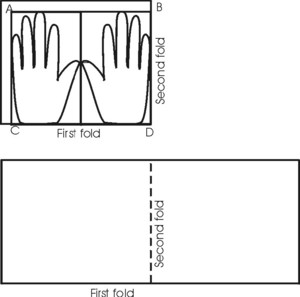Osteoarthritis seems determined to turn my fingers into useless twigs. On cold mornings I can hardly grasp my hairbrush, let alone something as small as a toothbrush. My arthritis isn’t so much about pain as stiffness, loss of dexterity, and ugly lumpy knuckles.
Medical research is making great progress against rheumatoid arthritis and flu. But sufferers of the comparatively superficial OA and common cold are left to muddle through with OTC products and home remedies.
After almost thirty years of muddling, I’ve found some things that help with the OA.
1. Keep them warm. Wear light cotton knit gloves with a knit cuff in bed.
2. Keep them warm. If your hand gets cold sitting on the mouse or trackball, cut the fingertips off a soft light glove. Start with just the tips and trim only enough to allow use of your fingertips. Cut off the tips of the other glove so you can wear both for typing. Try wearing the gloves wrong side out to increase flexibility.
3. Keep them warm. Wear gloves if it’s even chilly outside.
4. Keep them warm. Wear mittens if it’s really cold out. Your fingers can keep each other warmer than when separated by gloves. You can even pull the thumb into the group. If your hands still get too cold, wear soft knit gloves inside the mittens.
5. Keep them warm. Hot water feels good at the time but soon dries out your skin. The hot paraffin treatment so popular at nail salons was recommended to me by a chiropractor when OA first started affecting my fingers. The special paraffin contains emollients that are good for the skin. Homeowner units are available. On the down side, you must keep one on full time to be warm when you need it. When mine died, I made a microwavable hot bag with rice. See instructions below. Dry heat is better than wet.
6. Switch to stemware. Replace drinking glasses with stemware. Even a large stem glass like restaurants use is much easier to handle and more fun to drink from.
7. Keep them busy. The best way to hang on to your manual dexterity is to insist on it. If you do any craft that entails manipulation like crocheting, knitting, beading, sculpting, KEEP DOING IT. If you don’t, start something. Even typing or cutting up vegetables for soup will keep your fingers working. Granted it does become more difficult, but giving it up has no benefit whatsoever.
8. Lick your fingers. Can’t pick up a pin or other tiny object? Lick a finger and press it on the itty bitty thing. Lift and turn your finger over quickly and you probably have it right there on the tip of your finger.
9. Stretch the ligaments. Squeezing exercises the muscles but it’s the joints that arthritis damages. A physical therapist taught me to stretch the ligaments by pressing each finger in each direction with the other hand for 10-15 seconds. Press it closed as much as possible, then open, then to each side. Do this daily and it really does help. It’s best done by yourself because you can feel what is not enough pressure and what is too much.
10. Keep them proud. Years ago I heard of a woman whose fingers were horribly twisted by arthritis, but her nails were bright red. This is purely psychological but it gave me courage to face my arthritis and deal with it.
Hot bag: A double bag full of uncooked rice that you heat in the microwave and slip both hands into. Requires simple straight machine stitching.
If you don’t sew, try using pantyhose – stick one leg inside the other to double the strength and tie knots to close instead of sewing. Forget the measuring steps below and experiment to find the best size. A double bag made this way won’t be closed across the fingertip side but it will still work.
Fabric: approximately 18″ x 24″: Something pleasant to the touch – old t-shirt, sweatshirt, towel, sheet, or any fabric of similar weight.
Filling: 3 pounds uncooked rice.
1. Measure the length of your hand from wrist to middle fingertip and width including thumb. Draw a rectangle to these measurements. Double it for both hands.
2. Add ½” seam allowance to top (A-B) and one side (A-C). This new rectangle is your pattern.
3. Fold the fabric in half the long way, then in half again the opposite way, resulting in four layers. Lay the pattern on it with the bottom edge along the first fold and one side along the second. Cut through all four layers along the other two sides.
4. Mark the first fold (B-D) and open it. Stitch through both layers along this fold line. Double stitch (run a second line of stitching right next to, but not on top of the first).
5. Fold the bag again on the stitching line. Double stitch along the long side (A-B) through all four layers.
6. Pour a pound and a half of rice in each side.
7. Double stitch the remaining end (A-C) closed through all four layers.
8. Turn so stitching is inside the bag and put it in the microwave to heat!
To use: Heat it until it is almost too hot to hold. Experiment with your microwave oven to find the optimum time to heat to the most satisfying temperature. Store the bag in a sealed container to keep it safe from critters.
A single layer bag can be made to use on an aching knee or elbow. Adjust the measurements and add ties or elastic if you like.

